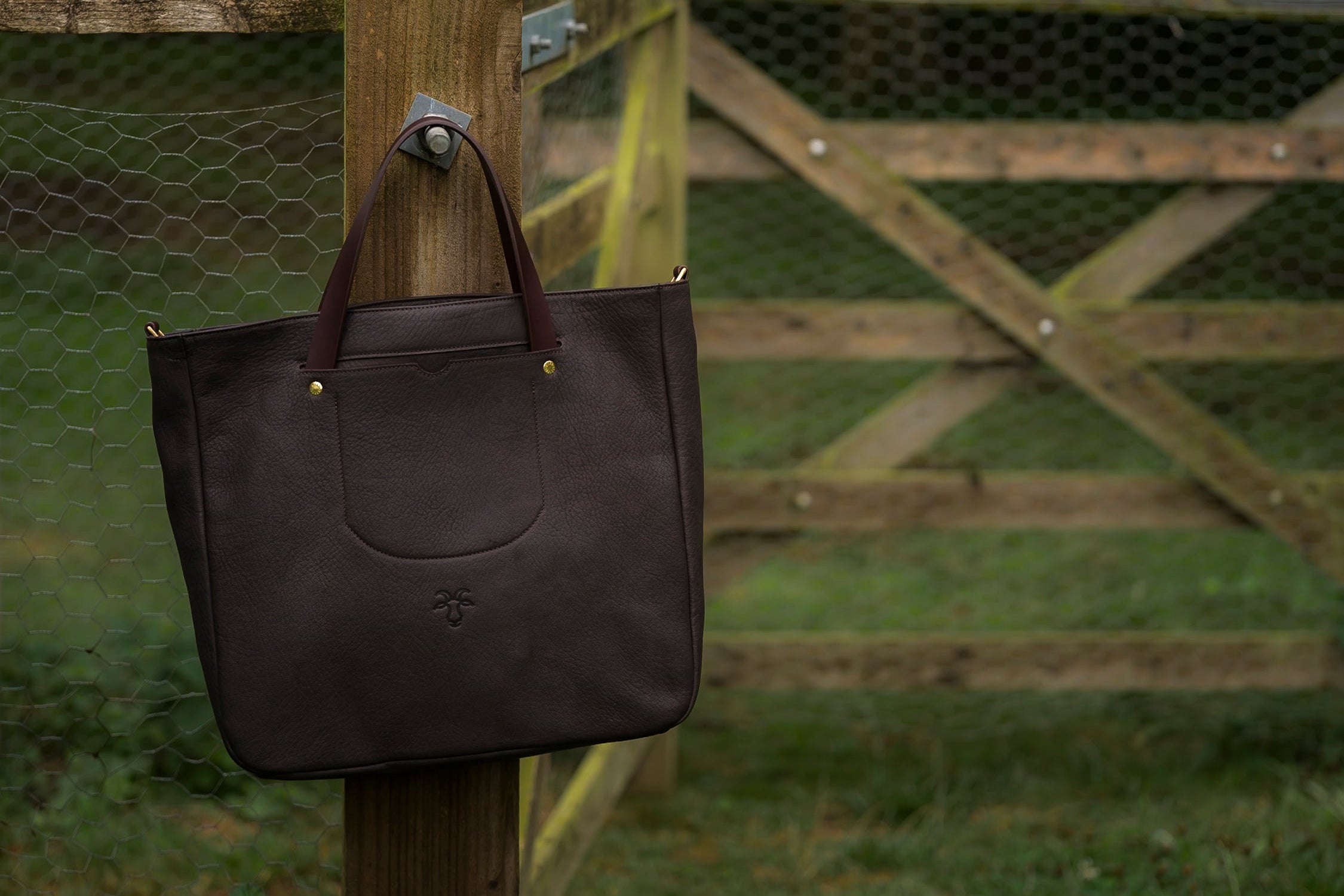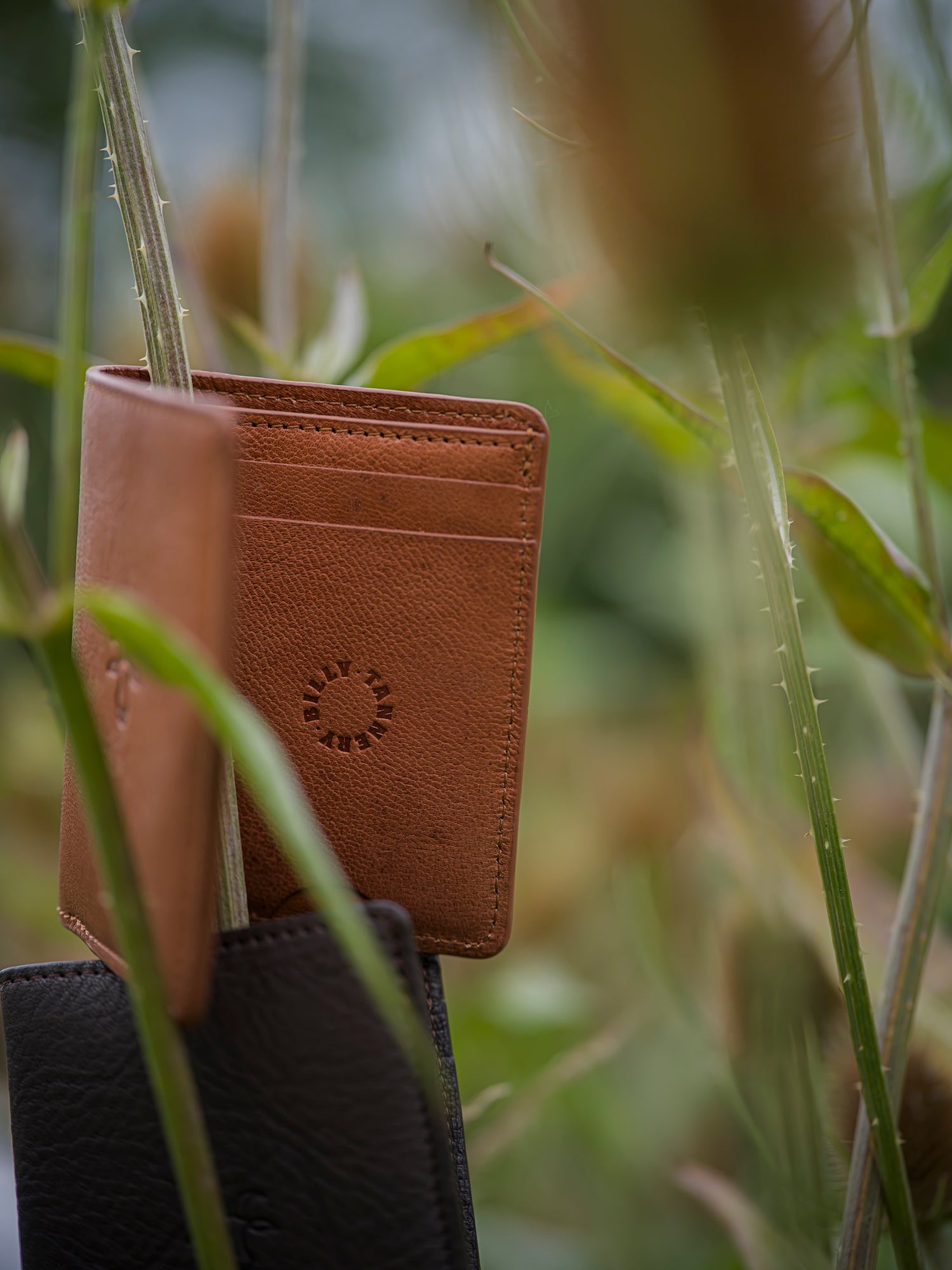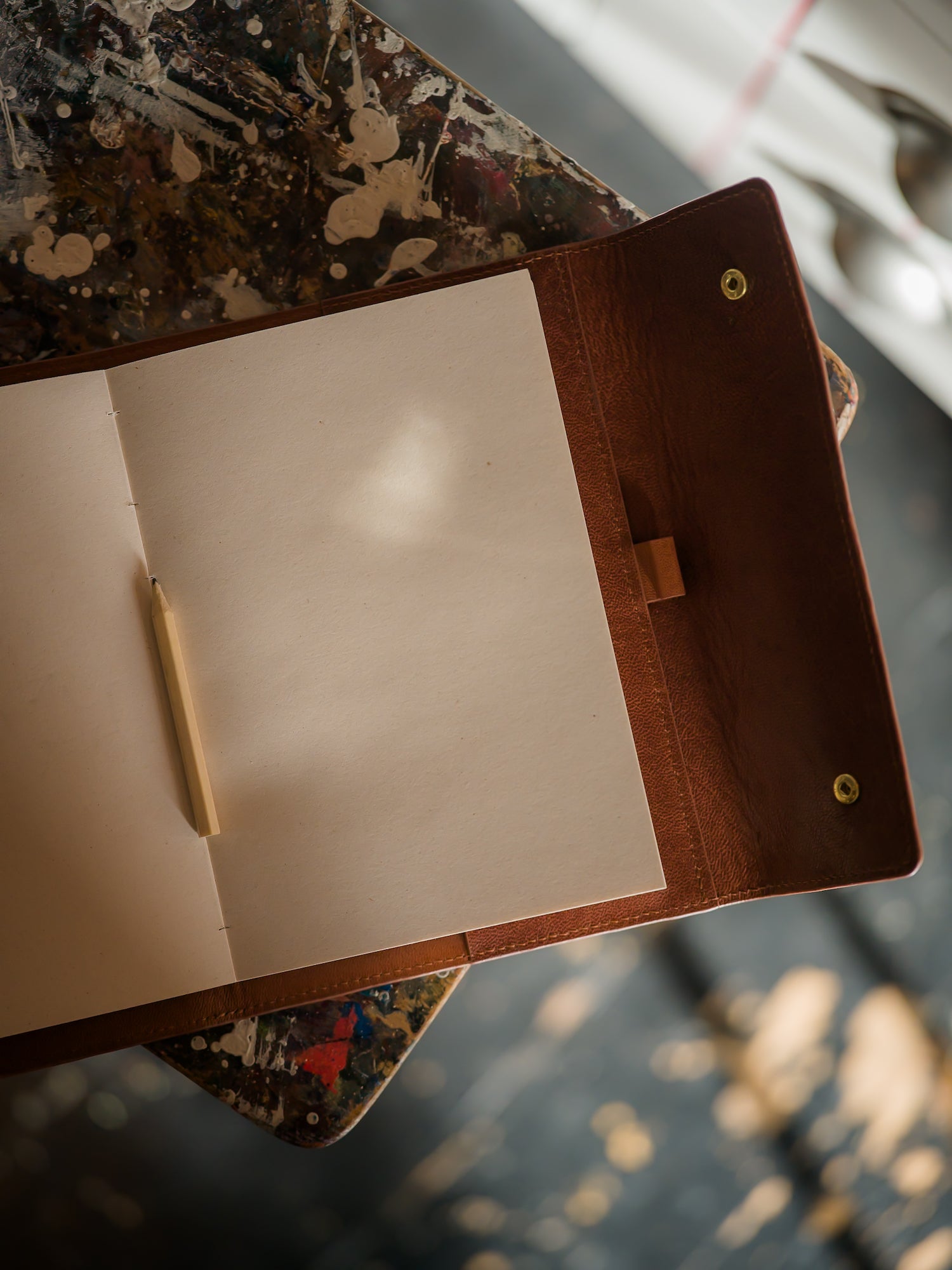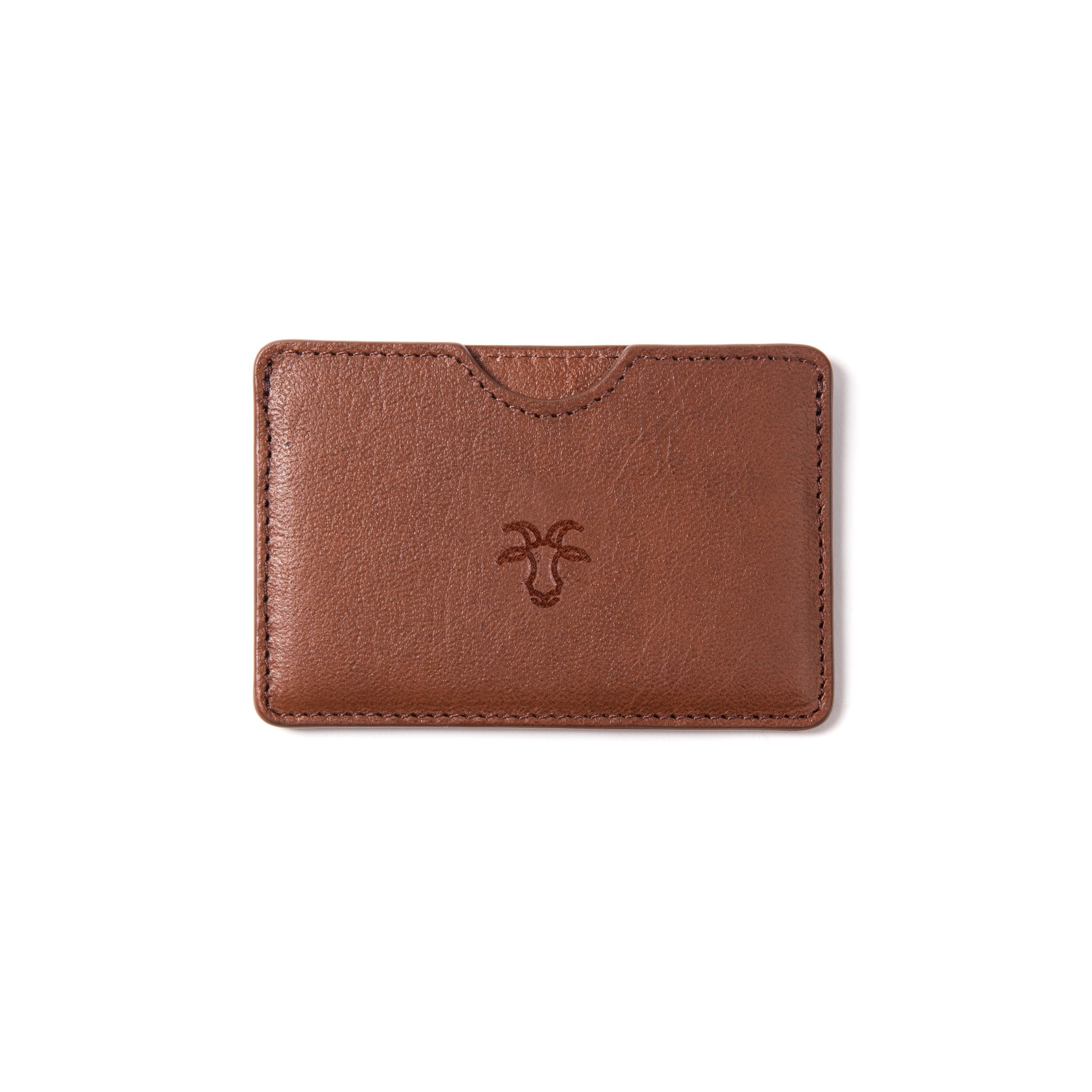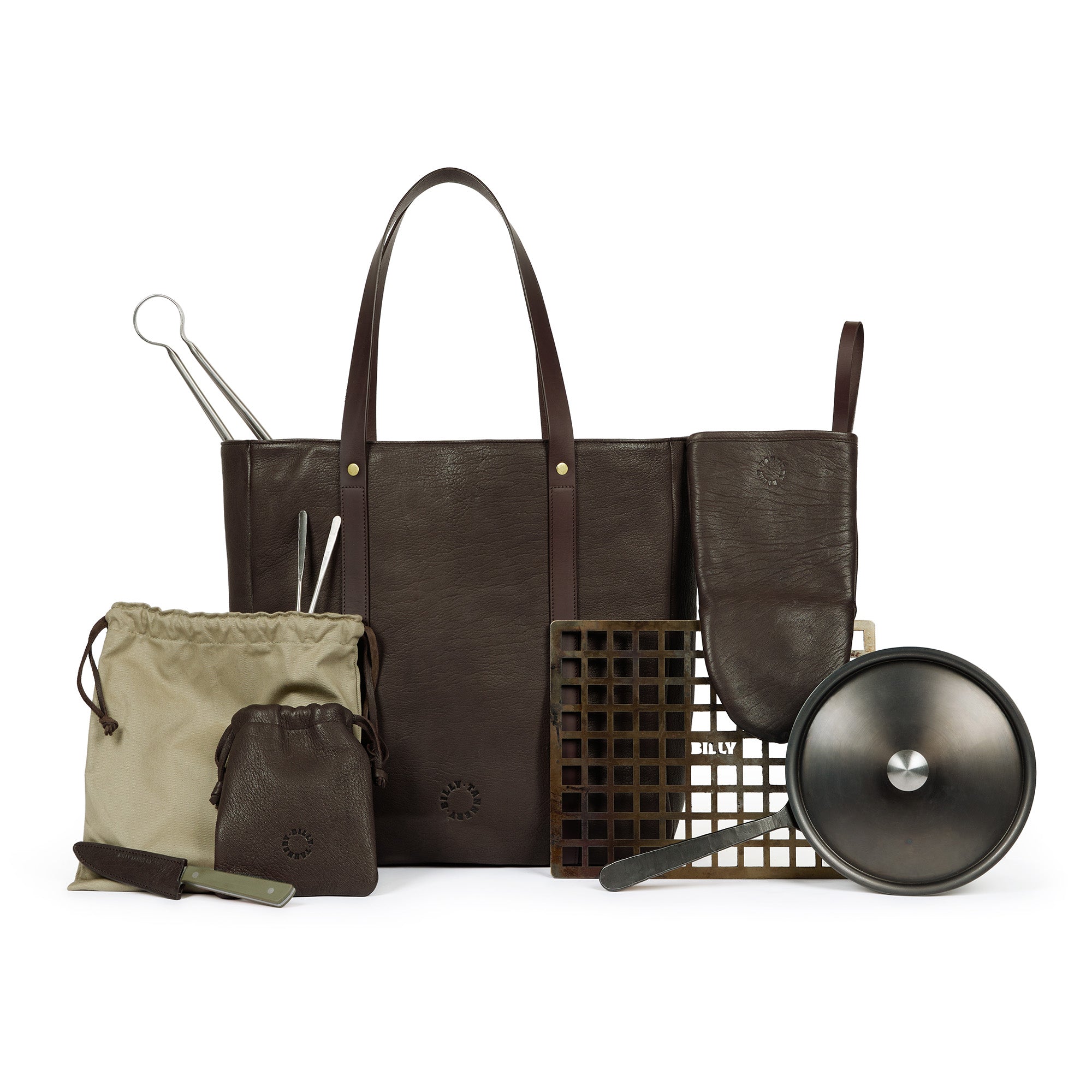Leather has been used for centuries, with our ancestors using it to protect themselves from the elements and make tools that would help in their day-to-day lives. And whilst large animals, like cows, have long been a common source for hides due to their size, smaller animals such as goats and sheep also provide high-quality and versatile leather.
Here at Billy Tannery, we use goatskins sourced from British farmers that would otherwise go to waste and while we love our leather and the products we make from it, we also love sharing valuable insights about the industry with you too. That's why in this article, we explore the similarities and differences when it comes to goat vs sheep leather.
Goat leather vs sheep leather
Quality
Although cow is arguably the most common type of leather, both goat and sheep leather are widely used in the leather industry and offer great quality. That being said, the quality of leather depends on factors such as the animal's breed, age, and the tanning process used.
Generally, sheep leather is known for its softness, smooth texture, and fine grain, making it suitable for luxury products like high-end apparel and accessories. Goat leather, on the other hand, is characterised by its strength, durability, and natural grain patterns, making it suitable for products like leather bags, footwear, and upholstery.
Sustainability
Sustainability in the leather industry is a complex topic, involving factors such as the animal's rearing conditions, tanning methods, and waste management. Neither goat nor sheep leather can be considered inherently more sustainable than the other. The sustainability of leather production depends on factors such as the source of the animal hides, the environmental impact of farming practices, and the tanning processes used.
All our goat hides are fully traceable, as we work in partnership with British farmers. We procure skins that would otherwise end up in landfill or burnt and our microtannery uses environmentally conscious tanning methods. 
Durability
When it comes to durability, goat leather is generally considered more durable than sheep leather. Goat leather has natural oils that make it resistant to water and cracking, while also providing a high level of flexibility. This durability makes it suitable for products that require strength and longevity, such as bags, jackets, and boots. Sheep leather is still durable, but it is softer and more supple, which may make it slightly less resistant to wear and tear over time. However, with proper care and maintenance, both types of leather can have a long lifespan.
Thickness
Both goat and sheep leather are available in varying thicknesses, depending on the specific application and the desired characteristics of the end product. Sheep leather is generally thinner and more lightweight compared to goat leather, which can make it more suitable for garments and accessories that require a softer and more pliable feel. Goat leather, being thicker and sturdier, is often used for products that require more structural integrity and undergo frequent use, like belts, chefs’ aprons, and ziptop backpacks.
Grain
Grain refers to the surface texture of the leather. Both goat and sheep leather can have different types of grains, depending on the specific hide and tanning process. Sheep leather often has a smoother and more even grain pattern, which lends itself well to a refined and elegant appearance. Goat leather, on the other hand, has a distinctive grain with natural irregularities, giving it a unique and rustic look. The choice between these grains depends on personal preference and the desired aesthetic of the product.
If you haven’t already guessed, we champion goat leather here at Billy Tannery. We love how its natural appearance lends itself to products that are truly one of a kind. Plus, over time, it develops a beautiful patina that makes it even more special. All of our products are made with full-grain leather which is considered to be the highest-quality leather available.
Goat leather vs lamb leather
So, by now, we hope you’ve got a good idea of how goat leather and sheep leather compare but what about lamb’s leather? Derived from the hides of young sheep, lamb leather does have some different characteristics to the leather that comes from mature sheep and goat leather.
Goat leather, as already mentioned, is renowned for its durability and toughness, exhibiting a distinct grain complete with unique markings. In contrast, lamb leather is characterised by its soft and luxurious texture, with a finer grain and less natural irregularities. Sheep leather strikes a balance between goat and lamb leather. It possesses a moderately flexible and pliable texture, falling between the coarser grain of sheep leather and the softness of lamb leather. The appearance of sheep leather varies and it can possess distinctive marks.
Ultimately, in the showdown of goat leather vs lamb leather, which is best depends on the desired combination of durability, softness, and appearance for a particular product. For gloves, for example, lamb leather is popular as it's warm but flexible and supple. Whereas for bags and shoes, goat leather is a great option due to its robustness. As a material, it can stand up to daily use and maintain its form.
Deer vs goat vs sheep leather
Deer leather is another type that is often compared to goat, sheep, and cow leather. And as we’ve recently started producing parkland deer products, we thought it was worth mentioning how it measures up.
Deer leather is known for its softness, fine grain, and lightweight nature. It is admired for its supple feel and luxurious texture, making it suitable for high-quality garments and accessories. Compared to cow leather, goat leather, and sheep leather, deer leather can command a higher price as it is less commonly used due to limited availability. We source our deerskins from UK game dealers who purchase the animals after necessary deer culling takes place.
You can find out more about the leathers we use by checking out our deerskin leather guide and goat leather guide. After that, explore our range of leather products to see how we transform our goat and deer eco-leather into premium UK-made goods.
